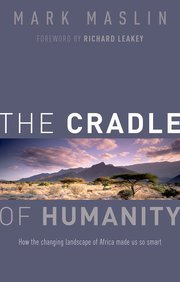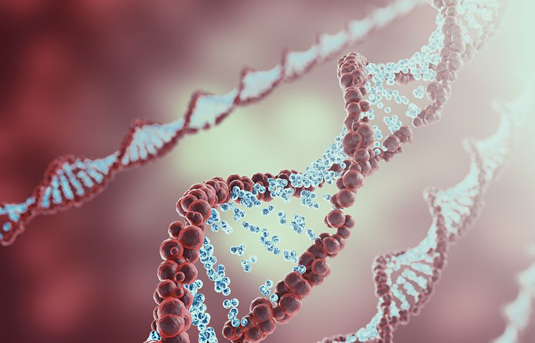Michael J. Behe's Blog, page 588
February 27, 2017
Dr. Wile Reviews Naturalism and Its Alternatives
Nuclear chemist Dr. Jay Wile recently wrote a review of the book Naturalism and Its Alternatives in Scientific Methodologies.
Here’s what Dr. Wile had to say:
What is the nature of science? Many think this is a fairly easy question to answer. Science is about making observations and then forming the most reasonable conclusions based on those observations, right? Well…that depends. There are many (myself included) who think that the scientific community as a whole artificially censors certain conclusions, because those conclusions don’t fit a criterion that has been imposed on science: that science can refer only to material causes. Because of this view, which is often called naturalism, many claim that science cannot deal with issues like purpose, will, the soul, or God…
I would like to suggest that anyone doing scientific research or planning to do scientific research should read this book. It will provide a lot of valuable guidance on how to do your research in a way that is unfettered by artificial constraints.
Also, this weekend was the Alternatives to Naturalism in Biology conference. It was a great time, great presentations, and we will have more to share with you as the days go on, but in the meantime I wanted to let you know about Dr. Wile’s review of Naturalism and Its Alternatives.
Copyright © 2017 Uncommon Descent . This Feed is for personal non-commercial use only. If you are not reading this material in your news aggregator, the site you are looking at is guilty of copyright infringement UNLESS EXPLICIT PERMISSION OTHERWISE HAS BEEN GIVEN. Please contact legal@uncommondescent.com so we can take legal action immediately.
Plugin by Taragana
February 26, 2017
Sociologist Steve Fuller on the significance of the Dover Trial
Dover cleared the decks for critical discussion of Darwinism and design by getting school board micro-politics out of it.
Fuller studies ID as a social movement in science. We hear some colleagues don’t like his views much.
See also: Dover all over
White cliffs. Dover: Creationism invades Europe
The Dover case, John West, and intelligent design
Steve Fuller: Humans will merge with AI
and
Steve Fuller’s Dissent over Descent
Follow UD News at Twitter!
Copyright © 2017 Uncommon Descent . This Feed is for personal non-commercial use only. If you are not reading this material in your news aggregator, the site you are looking at is guilty of copyright infringement UNLESS EXPLICIT PERMISSION OTHERWISE HAS BEEN GIVEN. Please contact legal@uncommondescent.com so we can take legal action immediately.
Plugin by Taragana
New Scientist: EU green energy policies making global warming worse
We didn’t realize it was still legal to say so. From Michael Le Page at New Scientist:
Countries in the EU, including the UK, are throwing away money by subsidising the burning of wood for energy, according to an independent report.
While burning some forms of wood waste can indeed reduce greenhouse gas emissions, in practice the growing use of wood energy in the EU is increasing rather than reducing emissions, the new report concludes.
Overall, burning wood for energy is much worse in climate terms than burning gas or even coal, but loopholes in the way emissions are counted are concealing the damage being done. More.
Report.* The Times was going on about this too:
Chopping down trees and transporting wood across the Atlantic Ocean to feed power stations produces more greenhouse gases than much cheaper coal, according to the report. It blames the rush to meet EU renewable energy targets, which resulted in ministers making the false assumption that burning trees was carbon-neutral. More.
Curiously, at activist site Mashable, science writer Miriam Kramer announced yesterday,
Don’t sit out on the March for Science because science isn’t political. It is.
…
If science weren’t politicized, we would have implemented measures to combat climate change back in the 1990s, or perhaps even earlier. More.
So then we would have had both bad policies and good policies sooner. But with less reflection, more of the policies would be bad. Seeing the world as Goodhats forcing Badhats to Care (marchin’, marchin’) feels good but gets people into counterproductive messes.
And good luck getting out of those messes once power, status, and money are all tangled up in them. All that said, march if you feel like it. But these days, there are more reliable ways to produce better decisions.
* Free online. The internet changes everything.
See also: What Copernicus really thought… not your usual lecture room platitude. This bears repeating: It is not true that our forebears in science shunned facts. More often, the sets of facts they were dealing with were much messier than pop science today usually portrays them to be.
It’s amazing how much good science started out as mistakes… Scerri: Rather than a hyper-intellectual, alien activity practiced by a remote priesthood, science is hit and miss, the ever-changing product of less-than-brilliant people, just like every other human activity.
and
Bill Nye would criminalize dissent from human-caused global warming claims.
Follow UD News at Twitter!
Copyright © 2017 Uncommon Descent . This Feed is for personal non-commercial use only. If you are not reading this material in your news aggregator, the site you are looking at is guilty of copyright infringement UNLESS EXPLICIT PERMISSION OTHERWISE HAS BEEN GIVEN. Please contact legal@uncommondescent.com so we can take legal action immediately.
Plugin by Taragana
What Copernicus really thought… not your usual lecture room platitude
 From astrophysicist Paul Sutter at LiveScience:
From astrophysicist Paul Sutter at LiveScience:
1) What we now call science, philosophy and theology were all mixed up together.
2) Early (proto-)scientists made claims and arguments that would sound totally bananas today.
I’ll leave Copernicus’ motivations to another article, but he did indeed publish a book in 1543 detailing his new cosmology with the sun at the center of the universe. While it did have some advantages over the en vogue geocentric model (like neatly explaining the precession of planetary orbits and requiring fewer circles-within-circles), it did have weaknesses (how, exactly, does something like the Earth move?), and the reaction among the literate community — including the Catholic clergy — was neither hostile nor supportive. At the time, the cosmology of Copernicus simply wasn’t very compelling. More.
And Kepler, who straightened out the mess to a great extent, was an astrologer.
This bears repeating: It is not true that our forebears in science shunned facts. More often, the sets of facts they were dealing with were much messier than pop science today usually portrays them to be.
Put another way, they did not have a set of Right Answers they were refusing to accept. They had people like Copernicus who happened to turn out to be right. And any number of others who turned out to be wrong. It’s to our ancestors’ credit that they managed as well as they did.
See also: It’s amazing how much good science started out as mistakes… Scerri: Rather than a hyper-intellectual, alien activity practiced by a remote priesthood, science is hit and miss, the ever-changing product of less-than-brilliant people, just like every other human activity.
Follow UD News at Twitter!
Copyright © 2017 Uncommon Descent . This Feed is for personal non-commercial use only. If you are not reading this material in your news aggregator, the site you are looking at is guilty of copyright infringement UNLESS EXPLICIT PERMISSION OTHERWISE HAS BEEN GIVEN. Please contact legal@uncommondescent.com so we can take legal action immediately.
Plugin by Taragana
Large Hadron Collider disproves the existence of ghosts?
 From Ross Pomeroy at at RealClearScience:
From Ross Pomeroy at at RealClearScience:
On a recent broadcast of BBC Radio Four’s The Infinite Monkey Cage centered around science and the paranormal, Cox had this to say on the topic:
“Before we ask the first question, I want to make a statement: We are not here to debate the existence of ghosts because they don’t exist.”
He continued:
“If we want some sort of pattern that carries information about our living cells to persist then we must specify precisely what medium carries that pattern and how it interacts with the matter particles out of which our bodies are made. We must, in other words, invent an extension to the Standard Model of Particle Physics that has escaped detection at the Large Hadron Collider. That’s almost inconceivable at the energy scales typical of the particle interactions in our bodies.”
Astrophysicist Neil deGrasse Tyson, who was also on the show, pressed Cox to clarify his statement. More.
About ghosts, we didn’t realize there was anything like a struggle going on… About consciousness, now …
See also: great physicists
Follow UD News at Twitter!
Copyright © 2017 Uncommon Descent . This Feed is for personal non-commercial use only. If you are not reading this material in your news aggregator, the site you are looking at is guilty of copyright infringement UNLESS EXPLICIT PERMISSION OTHERWISE HAS BEEN GIVEN. Please contact legal@uncommondescent.com so we can take legal action immediately.
Plugin by Taragana
Design Disquisitions: Jeffrey Koperski on Two Bad Ways and Two Good Ways to Attack ID (Part 1): Two Bad Ways
Here’s my new article at Design Disquisitions. Enjoy:
In the next two (potentially three) articles I’ll be taking an in-depth look at an excellent paper written by Jeffrey Koperski, a philosopher of science at Saginaw Valley State University. Koperski has written about ID in several publications (1), which I highly recommend, and he takes a balanced and sensible approach to this topic. As far as I can tell, he doesn’t accept ID, but takes a constructively critical stance, so his work is well worth engaging with.
As one can tell from the title of the paper, Two Bad Ways to Attack Intelligent Design and Two Goods Ones(2), Koperski critically analyses two common criticisms of ID, suggesting that they are highly dubious lines of argument. He then goes on to suggest two better ways of trying to refute design. In this first part, I’ll be taking a look at what he sees as two bad arguments. In the next article I’ll then turn to what he sees as two better arguments, and find out whether or not they withstand scrutiny.
Jeffrey Koperski on Two Bad Ways and Two Good Ways to Attack ID (Part 1): Two Bad Ways
Copyright © 2017 Uncommon Descent . This Feed is for personal non-commercial use only. If you are not reading this material in your news aggregator, the site you are looking at is guilty of copyright infringement UNLESS EXPLICIT PERMISSION OTHERWISE HAS BEEN GIVEN. Please contact legal@uncommondescent.com so we can take legal action immediately.
Plugin by Taragana
February 25, 2017
New controls found for gene expression – an epigenetic “gold rush”?
From Cassandra Willyard at Nature:
At the time, biologists were getting excited about the epigenome — the broad array of chemical marks that decorate DNA and its protein scaffold. These marks act like a chemical notation, telling the cell which genes to express and which to keep silent. As such, the epigenome helps to explain how cells with identical DNA can develop into the multitude of specialized types that make up different tissues. The marks help cells in the heart, for example, maintain their identity and not turn into neurons or fat cells. Misplaced epigenetic marks are often found in cancerous cells.
Why didn’t it happen sooner?:
The governing rule of molecular biology – the central dogma – holds that information flows from DNA to messenger RNA to protein. Many scientists therefore viewed mRNA as little more than a courier, carrying the genetic information encoded in a cell’s nucleus to the protein factories in the cytoplasm. That’s one reason why few researchers paid much attention to the modifications made to mRNA.
They were Darwinists. Simlicity was their Central Dogma, remember?
Oh, by the way, this is what the story sounds like now:
Over the past few years, researchers have identified some of the machinery involved in regulating these marks. Each requires a writer to place it, an eraser to remove it and a reader to interpret it (see ‘Reading, writing and regulation’). As the identities of these proteins emerged, scientists have come to understand that m6A affects not only RNA splicing, but also translation and RNA stability. More.
It all sounds like something that just sort of happened, right?
See also: Central Dogma: Missing, and presumed dead
and
Epigenetic change: Lamarck, wake up, you’re wanted in the conference room!
Follow UD News at Twitter!
Copyright © 2017 Uncommon Descent . This Feed is for personal non-commercial use only. If you are not reading this material in your news aggregator, the site you are looking at is guilty of copyright infringement UNLESS EXPLICIT PERMISSION OTHERWISE HAS BEEN GIVEN. Please contact legal@uncommondescent.com so we can take legal action immediately.
Plugin by Taragana
Human evolution: Climate change made us smart
 From Adrian Barnett at New Scientist, reviewing Mark Maslin’s
From Adrian Barnett at New Scientist, reviewing Mark Maslin’s
All this allows Maslin to buttress his central contention, that human evolution as we know it wouldn’t have occurred without the uplift of the Tibetan plateau and the formation of the Great Rift valley. These events, and the cycling between salt flats and shallow sea that mark the history of the Mediterranean, are the great drivers of human evolution – the climatic starting gun that set off the human race.
Maslin also provides a fine overview of the evolution of evolutionary thinking over the past 150 years, to the point where we now see it less as an orderly march towards an inevitable Homo sapiens and more of a random stumble to now.
…
More.
Randomness and climate change are big now, global. It’s not clear from the discussion why, if those factors were so important, they did not affect other contemporary life forms.
And from the publisher (Oxford, tbr)
One of the fundamental questions of our existence is why we are so smart. There are lots of drawbacks to having a large brain, including the huge food intake needed to keep the organ running, the frequency with which it goes wrong, and our very high infant and mother mortality rates compared with other mammals, due to the difficulty of giving birth to offspring with very large heads. So why did evolution favour the brainy ape? This question has been widely debated among biological anthropologists, and in recent years, Maslin and his colleagues have pioneered a new theory that might just be the answer.
Looking back to a crucial period some 1.9 million years ago, when brain capacity increased by as much as 80%, The Cradle of Humanity explores the implications of two adaptive responses by our hominin ancestors to rapid climatic changes – big jaws, and big brains. Maslin argues that the impact of changing landscapes and fluctuating climates that led to the appearance of intermittent freshwater lakes in East Africa may have played a key role in human evolution. Alongside the physical evidence of fossils and tools, he considers social theories of why a large, complex brain would have provided a major advantage when trying to survive in the constantly changing East African landscape.
As to the variety of reasons why we are smart, see also: Retroviruses play a role in development of human brain?
Tooth size not linked to brain size in early humans
Large human brain size easily explained?
Human origins: The war of trivial explanations
Follow UD News at Twitter!
Copyright © 2017 Uncommon Descent . This Feed is for personal non-commercial use only. If you are not reading this material in your news aggregator, the site you are looking at is guilty of copyright infringement UNLESS EXPLICIT PERMISSION OTHERWISE HAS BEEN GIVEN. Please contact legal@uncommondescent.com so we can take legal action immediately.
Plugin by Taragana
Crisis in cosmology: Universe expanding too fast?
From Dennis Overbye at New York Times:
There is a crisis brewing in the cosmos, or perhaps in the community of cosmologists. The universe seems to be expanding too fast, some astronomers say. Recent measurements of the distances and velocities of faraway galaxies don’t agree with a hard-won “standard model” of the cosmos that has prevailed for the past two decades. The latest result shows a 9 percent discrepancy in the value of a long-sought number called the Hubble constant, which describes how fast the universe is expanding. But in a measure of how precise cosmologists think their science has become, this small mismatch has fostered a debate about just how well we know the cosmos. “If it is real, we will learn new physics,” said Wendy Freedman of the University of Chicago, who has spent most of her career charting the size and growth of the universe.
Michael S. Turner of the University of Chicago said, “If the discrepancy is real, this could be a disruption of the current highly successful standard model of cosmology and just what the younger generation wants – a chance for big discoveries, new insights and breakthroughs.” More.
 Okay, but the thing is… crises don’t usually go on for years. Some law governs that. Meanwhile, for alternative cosmology crises on offer…
Okay, but the thing is… crises don’t usually go on for years. Some law governs that. Meanwhile, for alternative cosmology crises on offer…
See also: BBC: Inflation (multiverse) theories only work if supplemented by “exotic physics” (2015)
Planck satellite data says that big BICEP2 cosmic inflation multiverse was just dust (2014)
and
Rob Sheldon: There isn’t a single model of inflation that works (2014)
Follow UD News at Twitter!
Copyright © 2017 Uncommon Descent . This Feed is for personal non-commercial use only. If you are not reading this material in your news aggregator, the site you are looking at is guilty of copyright infringement UNLESS EXPLICIT PERMISSION OTHERWISE HAS BEEN GIVEN. Please contact legal@uncommondescent.com so we can take legal action immediately.
Plugin by Taragana
Origin of life researchers: Two simple prebiotic hairpin molecules could cooperate

DNA replicating/rost9, fotolia.com
“Prebiotic” chemistry means the development and demonstration of theories about how chemicals washed together and somehow formed the immensely complex structures of life. There is no shortage of single-event scenarios.
A hairpin loop is “an unpaired loop of messenger RNA (mRNA) that is created when an mRNA strand folds and forms base pairs with another section of the same strand. The resulting structure looks like a loop or a U-shape. (Suitable)” In DNA too.
From ScienceDaily:
The evolution of cells and organisms is thought to have been preceded by a phase in which informational molecules like DNA could be replicated selectively. New work shows that hairpin structures make particularly effective DNA replicator.
In the metabolism of all living organisms there is a clear division of labor: Nucleic acids (DNA and RNA) carry the information for the synthesis of proteins, and proteins provide the structural and executive functions required by cells, such as the controlled and specific catalysis of chemical reactions by enzymes. However, in recent decades, it has become clear that this distinction is by no means absolute. In particular RNA is capable of ignoring the boundary outlined above and is known to play a catalytic role in many important processes. For example, certain RNA molecules can catalyze the replication of other nucleic acids, and this versatility could help to explain how life originated on Earth.
…
In subsequent experiments the researchers discovered that two simple hairpin species could cooperate to give rise to a much more efficient replicator, which requires two primers for its amplification. The two hairpin species selected each required a different primer, but their sequences were in part identical. The switch to cooperative replication occurs when replication of one of the hairpins stalls. “As a rule, replication processes in nature are never perfect,” says Dieter Braun. “Such a premature halt is not something that one needs to design into the system. It happens stochastically and we make use of it in our experiments.” The partially replicated hairpin can, however, bind to a molecule of the second species, and serves as a primer that can be further elongated. Moreover, the resulting product no longer forms a hairpin. In other words, it represents a new molecular species. Paper. (paywall) – http://journals.aps.org/prl/abstract/... More.
So, it is simple – like a human language – right? The researchers say it is stochastic (accidental) yet they make it sound like a project. We’ll likely be here a decade from now.
See also: Researchers: Life originated from simple fats, amino acids – but we will likely never know
How ID theorist Michael Behe forced Darwin’s faithful to start talking nonsense
Prebiotic molecules found in proto-suns?
and
What we know and don’t know about the origin of life
Follow UD News at Twitter!
Copyright © 2017 Uncommon Descent . This Feed is for personal non-commercial use only. If you are not reading this material in your news aggregator, the site you are looking at is guilty of copyright infringement UNLESS EXPLICIT PERMISSION OTHERWISE HAS BEEN GIVEN. Please contact legal@uncommondescent.com so we can take legal action immediately.
Plugin by Taragana
Michael J. Behe's Blog
- Michael J. Behe's profile
- 219 followers



